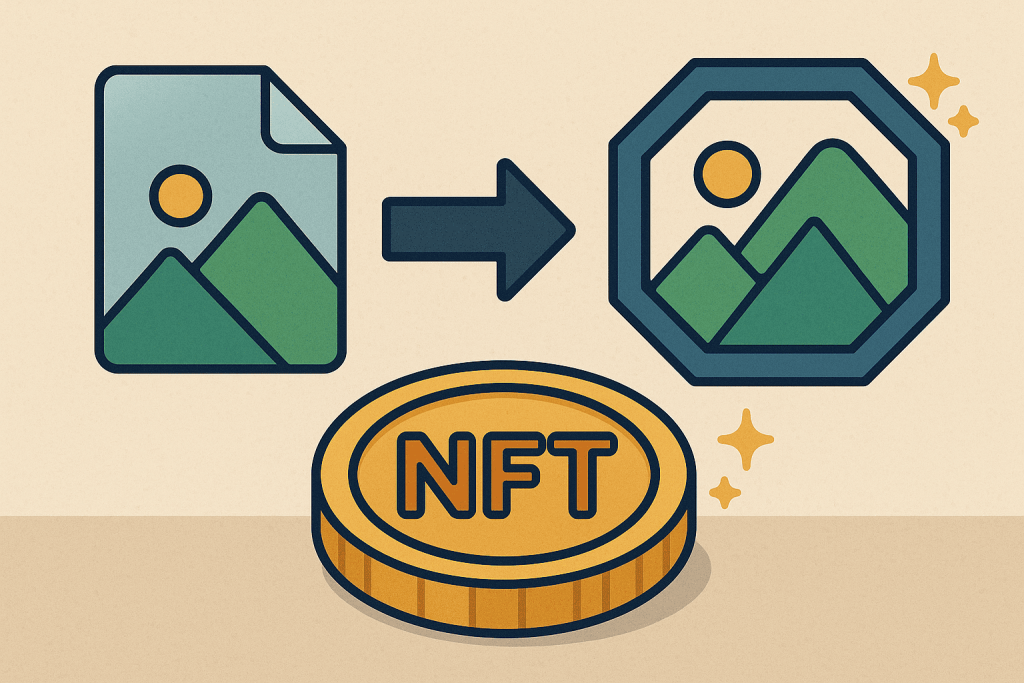
Until recently, digital files were seen as something infinitely copyable and identical. An image shared online could have thousands of copies, each looking exactly like the original. Music, video, or digital art could be stored on countless devices, and no one could prove who owned the “real” version. The internet had no scarcity, and therefore no true sense of ownership. Everything changed with the emergence of NFTs, which transformed digital objects into fully unique assets with defined ownership, history, and value.
What NFTs Are and Why They Created a Revolution
NFT (Non-Fungible Token) is a unique token recorded in a blockchain. It is not the file itself, not the image or music, but a record in a transparent and immutable ledger confirming who owns a digital object. The key factor is uniqueness. If a cryptocurrency like Bitcoin is interchangeable (one BTC equals another), an NFT has no identical copy. It exists as a one-of-a-kind item, which allows digital art, collectibles, and even property rights to exist in a verifiable digital form.
You can still copy the image file, but you cannot copy ownership. That is the breakthrough: the digital world finally received a mechanism for proving authenticity and ownership, similar to physical objects.
NFT’s Impact on Digital Art
Digital art was the first field where NFTs revealed their potential. Many artists spent years creating works that spread freely across the internet without any way to earn from them. NFTs allowed a digital artwork to become something that could be sold at auction, transferred to another owner, or collected. This led to historic sales: Beeple’s work “Everydays: The First 5000 Days” sold for $69 million, marking a new era in the art market.
The buyer did not receive “an image” but the ownership rights recorded in the blockchain. Even if thousands view or download the image, there remains only one original — the one identified by the NFT.
NFT Beyond Art
But art was only the beginning. NFTs expanded into many industries:
In gaming, items gained real-world value: skins, characters, and weapons became player-owned assets rather than developer-owned.
In sports, clubs issue collectible tokens of match highlights or digital autographs.
Musicians release limited tracks available only to NFT holders.
Digital real estate is sold in metaverses, gaining value and ownership.
Thus, NFTs became a way to verify uniqueness not just of visual art, but also of access rights, community membership, status, and virtual property.
Why NFTs Are Controversial
NFT popularity brought both enthusiasm and criticism. Some consider NFTs a financial bubble with inflated prices. Others focus on blockchain energy consumption. However, the industry evolves: new consensus mechanisms reduce energy use, and NFTs are transitioning from entertainment to digital rights infrastructure.
Most importantly, NFTs are not a trend. They form the foundation for how identity verification, document signing, media ownership, and legal agreements may work in the future.
NFT as the Foundation of Digital Identity
We are moving toward a world where more things exist digitally. From access to online communities to owning land in virtual cities — everything needs proof of ownership. NFTs provide a language for recognizing uniqueness in a world of endless copies.
How to Begin with NFTs
Before creating or collecting NFTs, it is important to have your own digital presence: a website, portfolio, artist page, or gallery. For this, you need a domain — a foundation of your identity, brand, or creative persona online.
RX-NAME helps register domain names for NFT projects, crypto portfolios, art galleries, and digital communities. Registering a domain establishes your presence in the digital world — a world where uniqueness and authenticity hold real value.

Leave a Reply